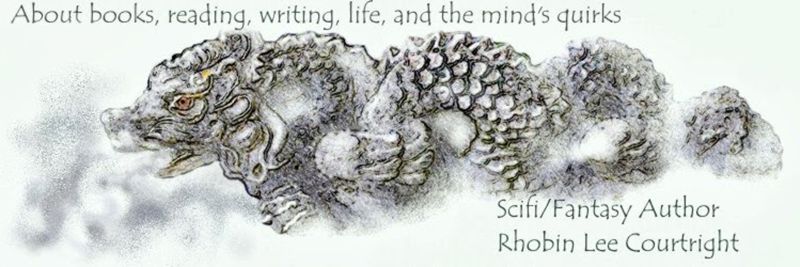 When I thought about this topic, I thought I didn't have any established method for organizing a story. Thinking about it I discovered maybe I do, I just approach it from a different angle each time. It's like a macramé where an assortment of threads are wrapped, knotted, or twisted together and in different directions to create a finished design.
When I thought about this topic, I thought I didn't have any established method for organizing a story. Thinking about it I discovered maybe I do, I just approach it from a different angle each time. It's like a macramé where an assortment of threads are wrapped, knotted, or twisted together and in different directions to create a finished design.For me, I usually have a vague, downtrodden female character arrive first. That sounds very gender divisive, but in defense of my genderism, I do tend to write for female readers, and also want to relay that I have recently had a male character emerge along with a story idea and a crew of associates. Since I've been writing, I've also had secondary characters from one story attract my attention, which has led to their own story and the creation of a series of related stories. I think good stories are made to promote the growth of thought and ideas for both reader and author, so maybe this is normal.
After the characters come, determining a rough story idea and where the story will take place. I do tend to follow the advice in Propp's Morphology of the Folk Tale, Christopher Vogler's The Writer's Journey, and Joseph Campell's The Hero With a Thousand Faces, so one of the next steps is to find characters who will become allies, antagonists, mentors, gatekeepers, or other archetypes. I often worry about my characters being too much alike since they are coming from the same brain, so I have used John M. Oldham, M.D. and Lois B. Morris' Personality Self-Portrait, Why You Think, Work, Love and Act the Way You Do, to help structure some of my characters.
Then I think about a world where these characters and their story takes place. From my previous stories, I have already created my writing worlds based on different readings, too. One is a galactic world and another a fantasy Renaissance type world for stories. I continue to use these imaginary worlds, but new locations pop up in these two very different types of worlds. World creation takes place in any Earth-bound story, too, because all locations and local cultures differ. If these do not have a ring of truth for the reader, they will be disenchanted with the world.
I've read about authors being either pantsers or plotters, but think I am a blend of the two, leaning toward being a plotter. I do map out a general outline from start to finish including all my ideas about the story and where it might go, including points of tension, the trials, and triumphs, but once I start writing things always go in very different directions during the process. Sometimes I need to take a break from a story and think about what has happened and where those events might lead. It can be a slow process.
Please visit these other participants and read their views on this topic:
Skye Taylor
Dr. Bob
A.J. Maguire
Marci Baun
Beverley Bateman
Margaret Fieland
Connie Vines
Judith Copek

You're a "Plotster" Or so the meme I found to post with my blog entry says! I was delighted to discover my method has a name.
ReplyDeleteAlso, like you, I often find a secondary character in one story takes on such a compelling persona that I just KNOW I have to write his or her story too.
I have a secondary character in my current WIP that definitely has a story waiting for her.
ReplyDeleteHonestly, there's nothing wrong with you writing about women for women. If it's what speaks to you, it's what you write and you'll do a better job because of it. Besides, there's so much written for and about men, we need more for and about women.
Interesting post. I think you have a structure you follow with picking the character first. And I have no problem with writing about women. Then you develop the story to fit your character which makes sense. And thanks for the reference books, which I sometimes forget to use. Beverley
ReplyDeleteJoseph Campbell and Syd Field were the instructors who foundations for writing. and then Chris Vogler's workshop with the movie Star Wars as a teaching tool, stays with me still. Thank you for another excellent blog post.
ReplyDeleteI liked the macramé anaology. So true. Impressed by all the resources you use for plot and character. Most of us have a methodology for writing. I usually start with place and then a character. Both are good, and then a plot reveals itself, sometimes slowly. As always a good, well thought-out post.
ReplyDelete